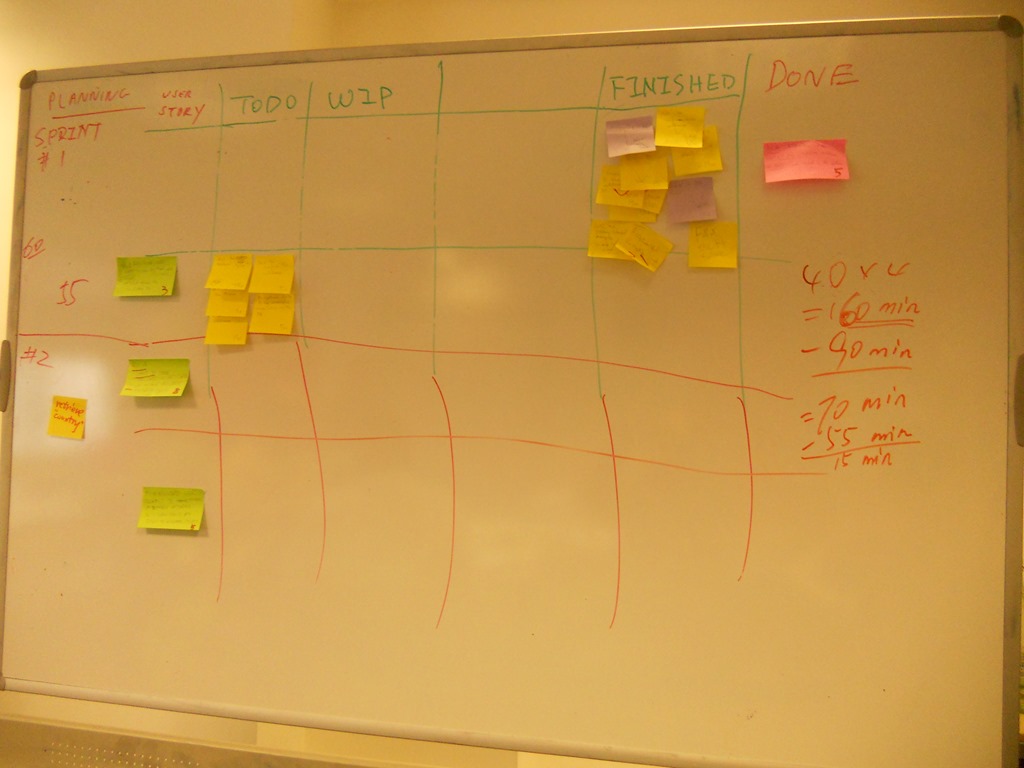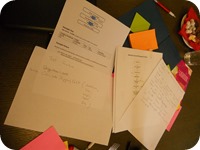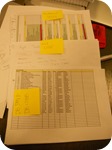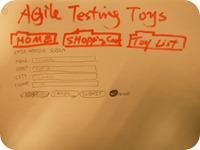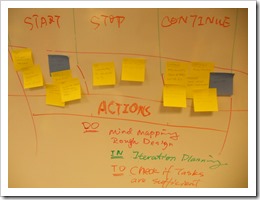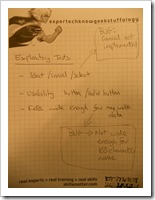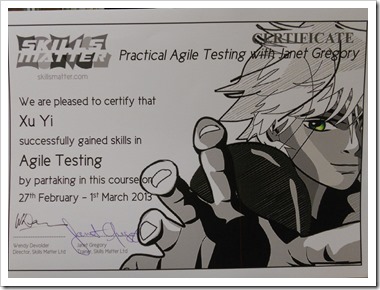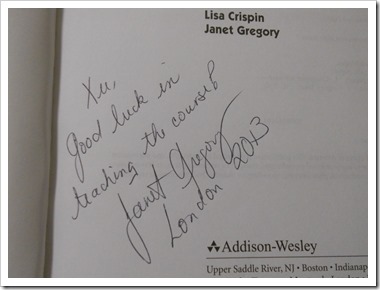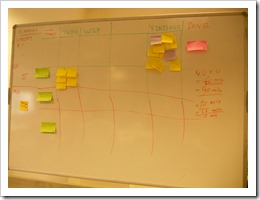 Today is the last day of the training, the major part is“Iteration Simulation”. It contains 2 iterations to continue developing our “Agile Testing Toys”website, we held planning and review and demo meetings, and we used all those practices and tricks learned these 3 days.
Today is the last day of the training, the major part is“Iteration Simulation”. It contains 2 iterations to continue developing our “Agile Testing Toys”website, we held planning and review and demo meetings, and we used all those practices and tricks learned these 3 days.
Of course we also used the Iteration Backlog as shown in this picture. In the 1st iteration, our team also tried to have “Daily Standup”, we split the iteration into 3 “days”, finally had 3~4 standups, which really helped us managing our progress against our plan from the planning. What happened to our team was, during the iteration, we found a lot of missing tasks, and we added them onto the board on the fly, instead of wait until the daily standup.
Before the simulation, we already had some functionalities ready, including GUI pages, pseudo code, database tables, acceptance tests, etc. Therefore while we’re proceeding with our 2 iterations, we need to taken care of our legacy too. For me, the simulation was full of fun, coz it’s very technical, we even need to write code and database implementations, based on … paper, and it didn’t block us from having a success simulation.
Below are the pictures of our artifacts.
At the end of 1st iteration, we held an retrospective meeting in a simple form, to discuss our the “start, stop, continue”. The biggest pain for our team was the problem of underestimation, which made us to drop the 2nd story we planned in the beginning. Then we realized that, it wasn’t because we underestimated each task, but we missed some of the tasks we finally done. And based on our suggestions of improvement in the “start”, we decided to “DO mind-mapping and rough design, IN iteration planning, TO check if tasks are sufficient.”Coz we thought, in the planning meeting, we did jump into creating concrete tasks directly, but didn’t really pay attention to the existing Flow Diagram and Acceptance Tests, nor we did the mind-maps, and then we missed. And later, our 2nd iteration immediately proved that this action worked pretty well.
The picture on the right, is a piece of paper that Peter Thomas created, with our Exploratory Tests, and it did find out 2… well, not exactly bugs, but more in a sense of New Features for us to implement in the future.
After retrospective, we also did an Release Review/Demo, each team would go on the stage and present their achievements. During this time, the other team mentioned a problem, that their feature actually reply on one of our implementation, e.g. to provide the “city” of the customer, while we did arrange this in our plan for Iteration 1 and 2. So, in their tests, they still have field for it, but it’s actually not used at all, so they asked that, if they need to keep it in such situation? Which was a good discussion.
I was somehow able to remember what the other team did for first 2 days, but since Day 3 was much much more interactive and collaborative, I spent almost all my time working together with our team, and don’t have sufficient knowledge nor understanding of their progress…
The finally part was to go through all the problems/questions listed at Day 1, to make sure that people got their questions answered. After that, we got our certificate by SkillsMatter, and also Janet’s signature on the complimentary book “Agile Testing: A Practical Guide for Testers and Agile Teams”.

